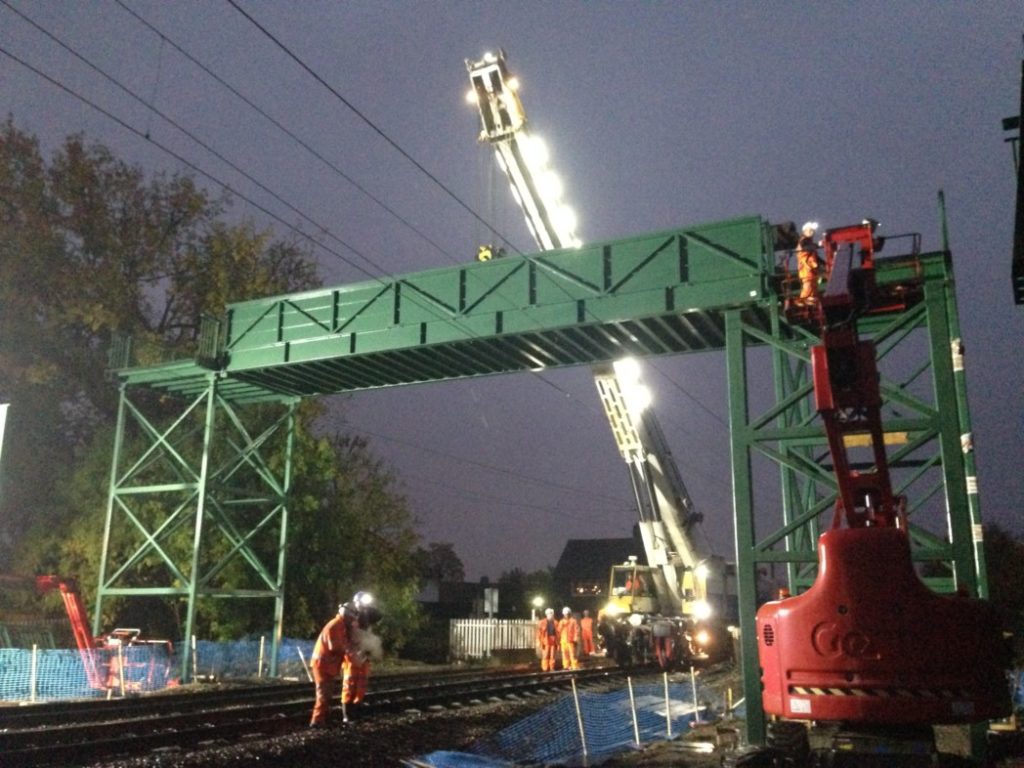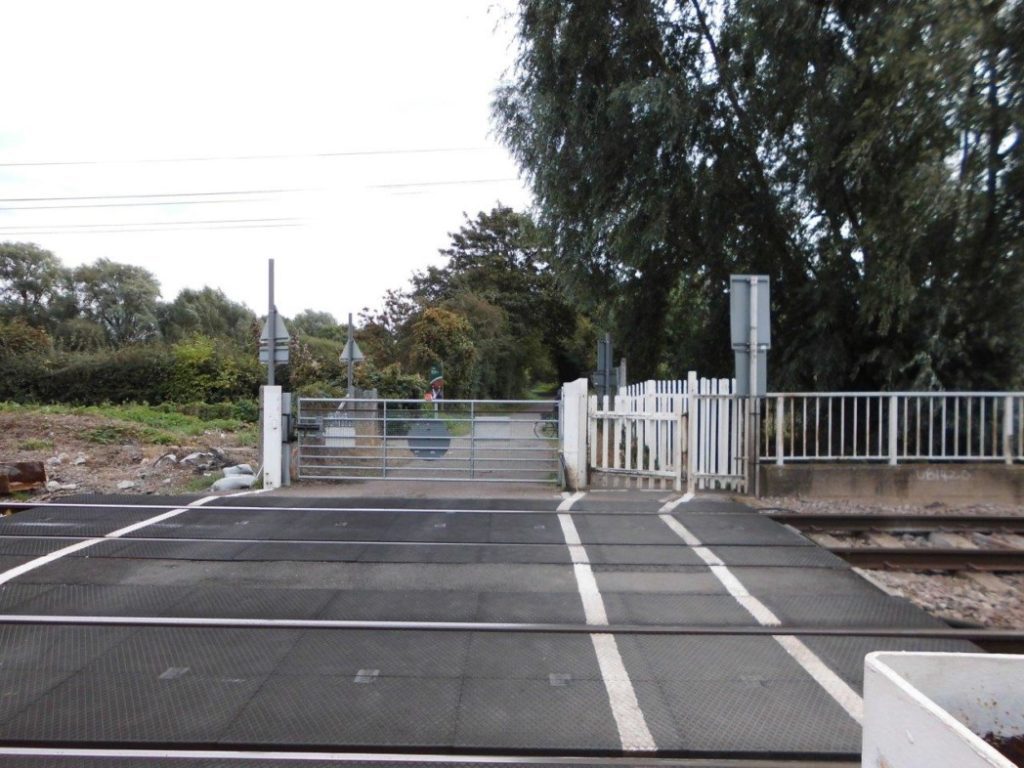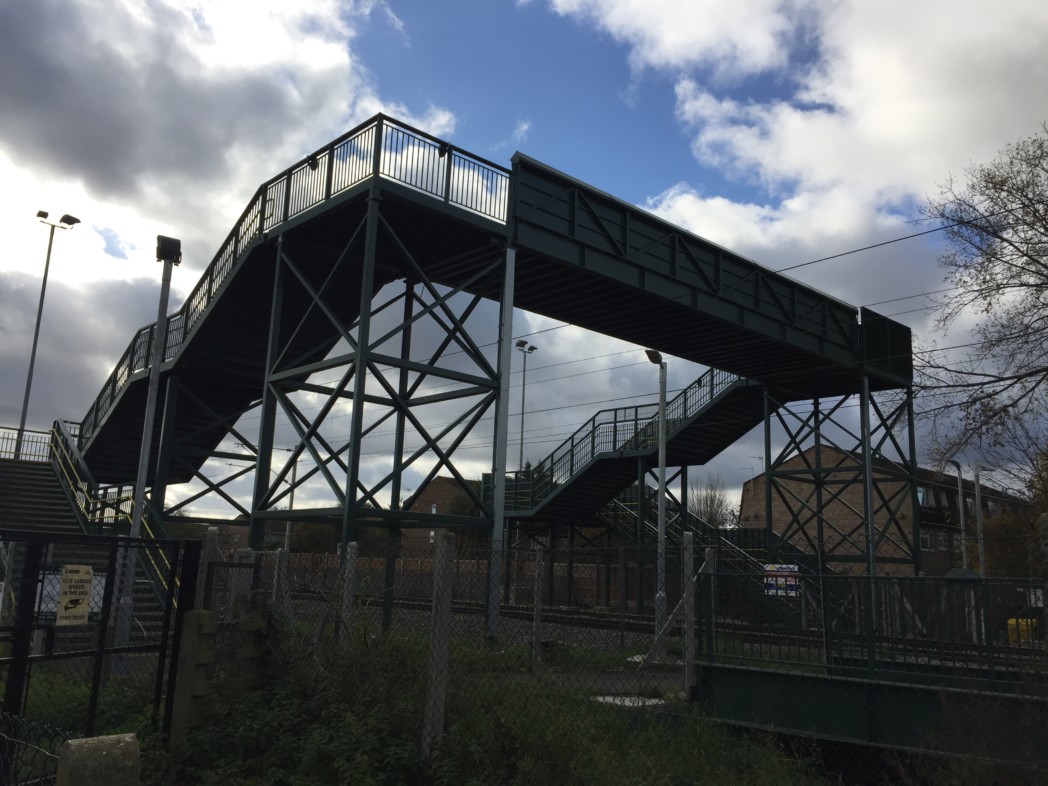One of the most dangerous foot level rail crossings in the country has been replaced in a masterstroke of value engineering, with design & installation in just six weeks.
Trinity Lane crossing at Waltham Cross, London, is an old-style facility that has been the scene of at least two near misses.
Partner, Jon Livesey, who has been working with Network Rail and Amco to resolve several challenges at site, said: “There are two simple wicket gates either side of the extremely busy Liverpool Street to Stansted Airport rail line, which means pedestrians literally have to look left, look right and, when the line is clear, cross to the other side.
“That is a somewhat haphazard method of crossing any rail line and certainly not ideal. The fact that there had been several incidents at Trinity Lane prompted Network Rail to take action, and quickly.”

New footbridge installation at Trinity Lane
The initial NR tender invited bidders to come up with an off-the-shelf temporary bridge solution.
“This would probably have had a shelf life of 20-30 years. However, we worked closely with Amco to develop a more effective outcome using an off-the-shelf proprietary bridge supported on modified Network Rail standard detail.”
This meant that not only could the bridge be manufactured and erected in a matter of weeks, but the alternative tender response idea also delivered a permanent solution and a bridge with a lifespan of nearer 120 years.
“The initial ‘temporary’ approach would have required a far more rigorous maintenance programme compared to the bridge actually constructed and, despite the changes, the main bridge was designed, detailed, manufactured & installed in just six weeks.

The old Trinity Lane crossing
“More to the point we were also able to incorporate some amazing value engineering methods, enabling the piles to be connected directly to the bridge trestles, drastically shortening installation time. The process also avoided the need for extensive excavation, removing the need to adjust Network Rail’s adjacent boundary.
“Subsequent to the main bridge, we also had to install two side bridges over the adjacent culvert, adjust the paths & fences, create a new car parking space and install improved communications for the crossing. These will remain for access by vehicles and reduced mobility users. Overall an amazing, cost-effective result with longevity and low maintenance implications.”

